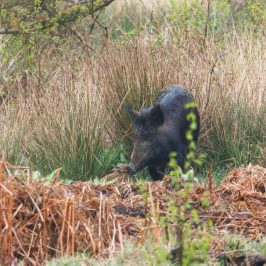The most exciting thing that happened to me today was a visit to my hairdresser in Chipping Norton. And the second most exciting was a five-minute stop at the Rollright Stones on my way back towards Moreton in Marsh. No, wait… scrub that.
The most exciting thing that happened to me today was managing – finally, after about a decade of dissatisfaction with the old one – to devise and make a new Christmas wreath for the front door. The second most exciting was a visit to my hairdresser in Chipping Norton. And the third most exciting was a five-minute stop at the Rollright Stones on my way back towards Moreton in Marsh. In other words, you’re getting a post about the third-best thing that happened today. Sorry about that, but a photo of the haircut would mean a selfie, the thought of which makes me shudder, and it was dark by the time I’d finished and hung the wreath, so photographing it will have to wait till another day. Or another year, quite possibly, because the front door desperately needs repainting, and that’s definitely not going to happen this side of Christmas.
So anyway. The Rollright Stones are a complex of three Neolithic and Bronze Age megalithic monuments, lying on the border between Oxfordshire and Warwickshire. The oldest group of five stones (which I didn’t take the time to visit today, though I have photographed them previously) are now called the Whispering Knights, and they’re thought to be the remains of a dolmen tomb, and to date to around 3,800BC. This is a panorama of what remains of a megalithic circle that’s now called The King’s Men, which was probably constructed around 2,500BC. And finally there’s a single 2.5m megalith – shown in my extra – which is called The King Stone, and which, because of its proximity to a known Bronze Age burial site, is believed to have been a cemetery marker.
The King’s Men form a rough circle about thirty metres in diameter. There are currently between seventy and eighty stones, but the Rollright Trust states that there were probably over a hundred originally, standing shoulder to shoulder. It’s thought that some stones were removed for building purposes, but others were simply stolen. The megaliths feature prominently in local folklore, and those that remain were chipped away at over the centuries by charm and souvenir hunters, leading to the strange shapes they have today. By the C19th, the extent of the damage was causing so much concern that in 1882 the monuments were placed under legal protection. At the end of the C20th, when the then-landowner decided to sell the site, a fundraising campaign was launched by local people, historians and pagans, and they succeeded in buying the land and the stones and placing them in a trust. As well as protecting the land and the megaliths, the Rollright Trust promotes research and education, and has an excellent web site.







